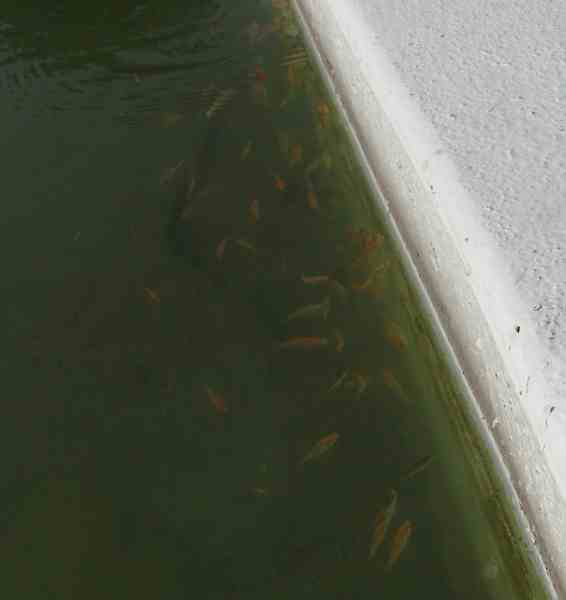I am trying to survive the heat wave and that means I am not doing much at all. However, I have noticed several things around town that caught my interest. First, there is a new playground, but I do not think anyone is allowed to play there yet. It is north of the new school on Melville.
There are thousands of little goldfish in the reflecting pond at St. Joseph's College. They seem to like the edge of the pond.
There is a new park bench in Memorial (Flat Iron) Park on McKinley Street. It has probably been there a while, but I just noticed it.
It was donated by the Rensselaer Class of 1962, so it must have been something they did to commemorate the 50th anniversary of their graduation.
I searched on the Internet for the origin of the saying, "Knee high by the Fourth of July" but could not find anything. The corn in the fields around town is head high and tasseling. I have never seen corn only knee high by the Fourth of July--it is usually taller than that by the Fourth of June. Anyone know where that expression came from?
Have a nice Fourth of July.





Maybe the expression came from farther north where they plant later.
ReplyDeleteThe expression comes from farther north and in a time where genetic manipulation was not the norm in corn.
ReplyDeleteWhile working at a newspaper in Randolph County in 1977 (after freshman year at IU), my knee appeared on the front page of that daily. Next to it was a yard stick and some growing field corn. One of the reporters wrote a piece about the crops, and he used me to verify corn was knee high by July 4. It wasn't much higher than my knee as I remember.
ReplyDeleteI just wanted to say thank you for all your posts around the city! I just love it and have learned so much i never knew about Rensselaer and all the new updates, you do an awesome job!
ReplyDeleteThis comment has been removed by the author.
ReplyDelete"Knee high by the 4th of July" was used by my grandpa in Iowa from as long as I can remember..he would be around 110 if he was still living...
ReplyDeleteIn olden days, when the corn was open pollinated, drainage technology was less advanced, and farm equipment was much smaller, the average time that corn got planted was roughly a month later than it is nowadays.
ReplyDeleteThe combination of those factors led to the old heuristic, which said that if the corn was up to the farmer's knees by Independence Day, he was heading for a pretty fair crop.